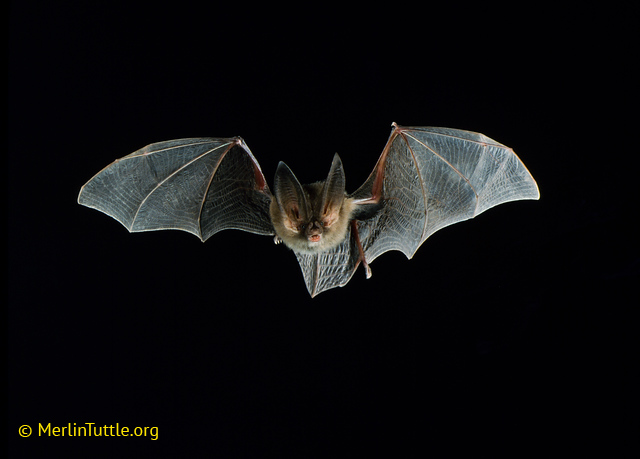Townsend’s Big-eared Bat
(Corynorhinus Townsendii)
PHOTOS BY MERLIN TUTTLE
When it's roosting or hibernating, Townsend's big-eared bat curls up its long ears to reduce heat loss. (In this state, it’s ears look like rams horns.)
Fur is pale gray or brown above and buff colored on the underside. This bat's ears are enormous, reaching a length of 38 mm. When the ears are laid back they extend to the middle of its body.
Primary prey: Moths, beetles, flies and wasps.
Predators: Snakes, owls, domestic cats, raccoons and hawks.
Range: These bats can be found throughout the western U.S. from British Columbia down into central Mexico. Hibernation (torpor)
Status: They are Species of Special Concern in California. (In decline in most areas of California).
Behavior: Townsend's big-eared bat is usually a late flier and will forage along the edge of vegetation. They are sensitive to disturbance, it has been documented that they will abandon roost sites after human interference. (Their dependence upon abandoned mines has put them at risk). Pesticide spraying also may affect their food source.
Wingspan: Is about 28 cm (11 in)
Weight: It weighs around 7–12 g
Body length: Is around 10 cm (4 in.), its tail being around 5 cm (2 in)
Offspring: 1 pup
Gestation: Lasts from 50 to 60 days, pups born between May and July. Pups will begin to flying at about 3 weeks old.
Life Span: 16 years (average 4-10 yrs)



